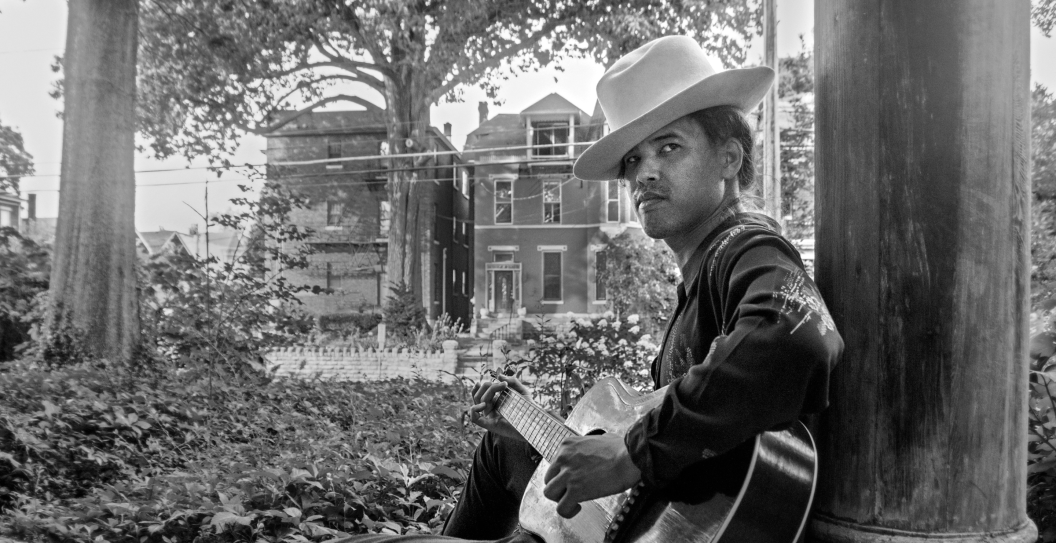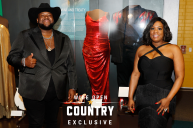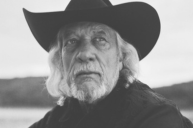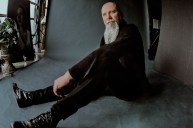Despite sounding straight out of 1923 rather than 2023, Nat Myers has captivated audiences stretching from street corners and subway stations in New York City to Pacific Ocean paradises like Hawaii and New Zealand with his old school country blues. On his full length debut Yellow Peril out June 23, the Korean-American again blurs the lines between past and present with vintage sounds pairing with modern day musings of a post-pandemic America.
Born in Kansas and raised primarily in Northern Kentucky, Myers grew up more interested in skateboarding, poetry and pop punk music than playing music himself. After his parents signed him up unknowingly for the school band, he even destroyed his trumpet in protest — although he'd later reverse course after his mother got him a guitar at 13.
Even so, he saw the instrument more as a vessel for his poetry than anything else, with the old-time blues his father loved as the language of choice upon noticing the similarities in its songwriting to epics like Herman Melville's Moby-Dick ("whenever it is a damp, drizzly November in my soul"). That sent him down the rabbit hole of blues men from Blind Lemon Jefferson to Charley Patton and beyond, further honing his blues chops.
"These musicians that existed in the '30s, '40s, '50s and even before recorded sound had a very Melvillian way of capturing the American epic for what it is," Myers tells Wide Open Country. "It shows that what happens on this continent is not only timeless, but it edges up against the greatest Homeric experiences that have been put to pen."
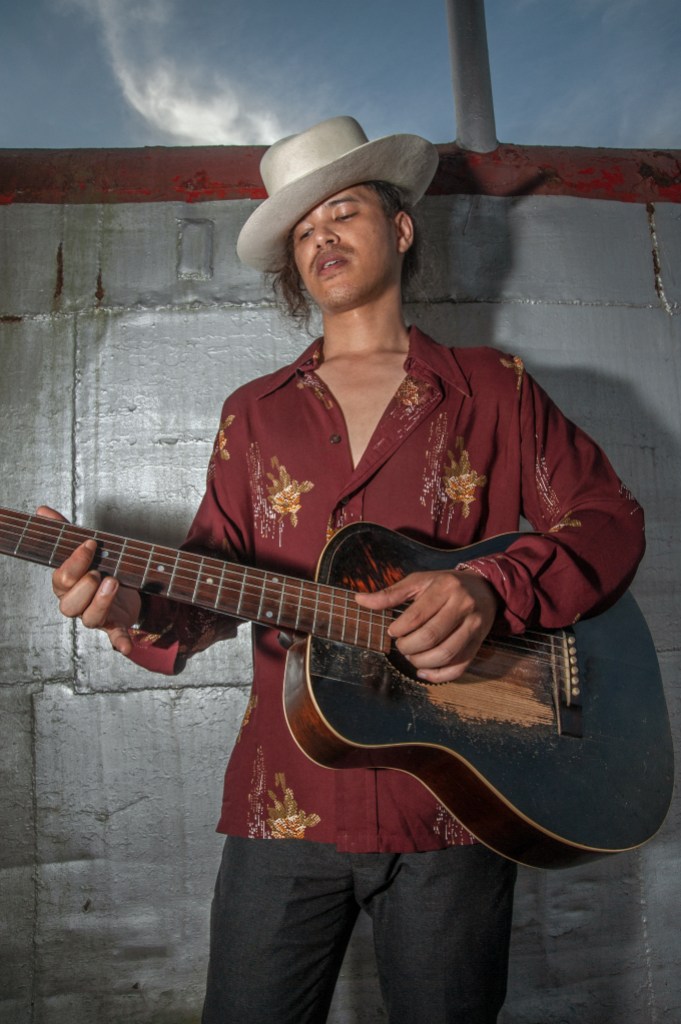
Jim Herrington
With poetry still the main focus Myers went on to study it at the New School in New York City, where he worked odd jobs and busked on the side to get by. When the chance to perform live dried up at the onset of the COVID-19 pandemic Myers took his music to a digital town square, uploading performance videos from home. It was one of those videos of him performing the instrumental "Poor Boy Headed Home" that raised the eyebrow of Dan Auerbach, front man for The Black Keys and founder of Easy Eye Sound, who invited Myers down to Nashville in the fall of 2021.
The two immediately hit it off, eventually co-writing nearly all of what would become Yellow Peril together, the only exception being its lead track "75-71," which Myers wrote himself. The album was soon cut over three days the next summer at Auerbach's Nashville home with blues icon Alvin Youngblood Hart, esteemed songwriter Pat McLaughlin and others.

Jim Herrington
"[Dan]'s got that punk ethos of wanting to find the shit that nobody else has heard of," says Myers of why he and Auerbach clicked so well. "At the same time he's as down to Earth as bedrock and a true blues man who's not gonna let anything stop him. I think he'd be doing the same thing even if nobody was paying attention."
In particular the combo of Myers, Auerbach and McLaughlin is a tour de force with joint songwriting credits on "Yellow Peril," "Ramble No More" and "Pray For Rain." While the title track sees him casting away Asian American hate ("Just wanna have a little fun before we die / There never ever was no difference 'tween you and I"), "Ramble No More" has Myers honoring late Tommy McClennan in a somber tribute about the door closing on a relationship for good.
Fortunately for Myers, its somber tone has still yielded him a lot of good fortune. On April 27 a video of the song shot by actor Jason Momoa (Game Of Thrones, Aquaman) was unveiled. The release came nearly a year after the two were first connected in the spring of 2021 when British artist K.K. Hammond shared an Instagram video of Myers' "Kennelman Blues" with Matt Eich, owner of Mule Resophonic Guitars, who passed it along to Momoa.
The encounter was mundane and spectacular all at once, ultimately helping to pull Myers out of a rut he'd been stuck in after some sour handshake deals fell through that saw him nearly put music on the backburner.

Jim Herrington
"My partner told me that if I loved her then I'd hit him up, so I did and was surprised to find that we were like two peas in a pod," says Myers. "He loves the old blues, and at the end of the day that's what we really pow-wowed about. The old blues, it sets you free, man."
Opposite the context of "Yellow Peril" and "Ramble No More" is "Pray For Rain," a gospel infused number about a tranquil state where your biggest concern is making sure your garden is fed enough water. Inspired by long haul truckers, touring musicians and others who spend extensive amounts of time burning up the interstate, it's also a lesson in coping with the resulting isolation and yearning to be back with those you love. According to Myers, he sees the experimental country gospel ditty as the beginning of a new branch on his musical tree in addition to being a hopeful note to end the turbulent tales of traveling on.
"I'm a big fan of Tyler Childers and other folks out there making actual country music," says Myers. "They're doing it in this really powerful way that isn't necessarily how I cut the log, but it's from the same tree. It's made me think about if I want to branch out a bit in the future, because a song like 'Pray For Rain' ain't really blues at all."
Whichever way Myers is cutting the log, it's working. Yellow Peril revels in nostalgia while simultaneously getting him in touch with his heritage and moving his musical ambitions forward.
"I wasn't raised with a clear understanding of my Asianness, and I didn't really have a consciousness about who I was as a Korean American until very recently. I got very militant about it during the pandemic, and while I've chilled out a little since then, I'm all about Yellow Power. I want this record to raise my folks up."
READ MORE: 25 Black Country Artists Who Shaped Country Music
